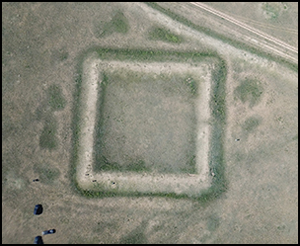Article contents
Medieval long-wall construction on the Mongolian Steppe during the eleventh to thirteenth centuries AD
Published online by Cambridge University Press: 09 June 2020
Abstract

The long walls of China and the Eurasian Steppe are considered to have functioned as either defensive structures against aggressive nomadic tribes, or as elements to control the movement of local nomadic groups following imperialist expansion. This article focuses on a hitherto understudied 737km-long medieval wall running from northern China into north-eastern Mongolia. Built by either the Liao or Jin Dynasties, the wall features numerous auxiliary structures that hint at its function. In research relevant to interpreting other Eurasian and global wall-building episodes, the authors employ extensive archaeological survey and GIS analysis to understand better the reasons behind the wall's construction, as well as its various possible functions.
- Type
- Research Article
- Information
- Copyright
-
Copyright © Antiquity Publications Ltd, 2020
References
- 7
- Cited by




